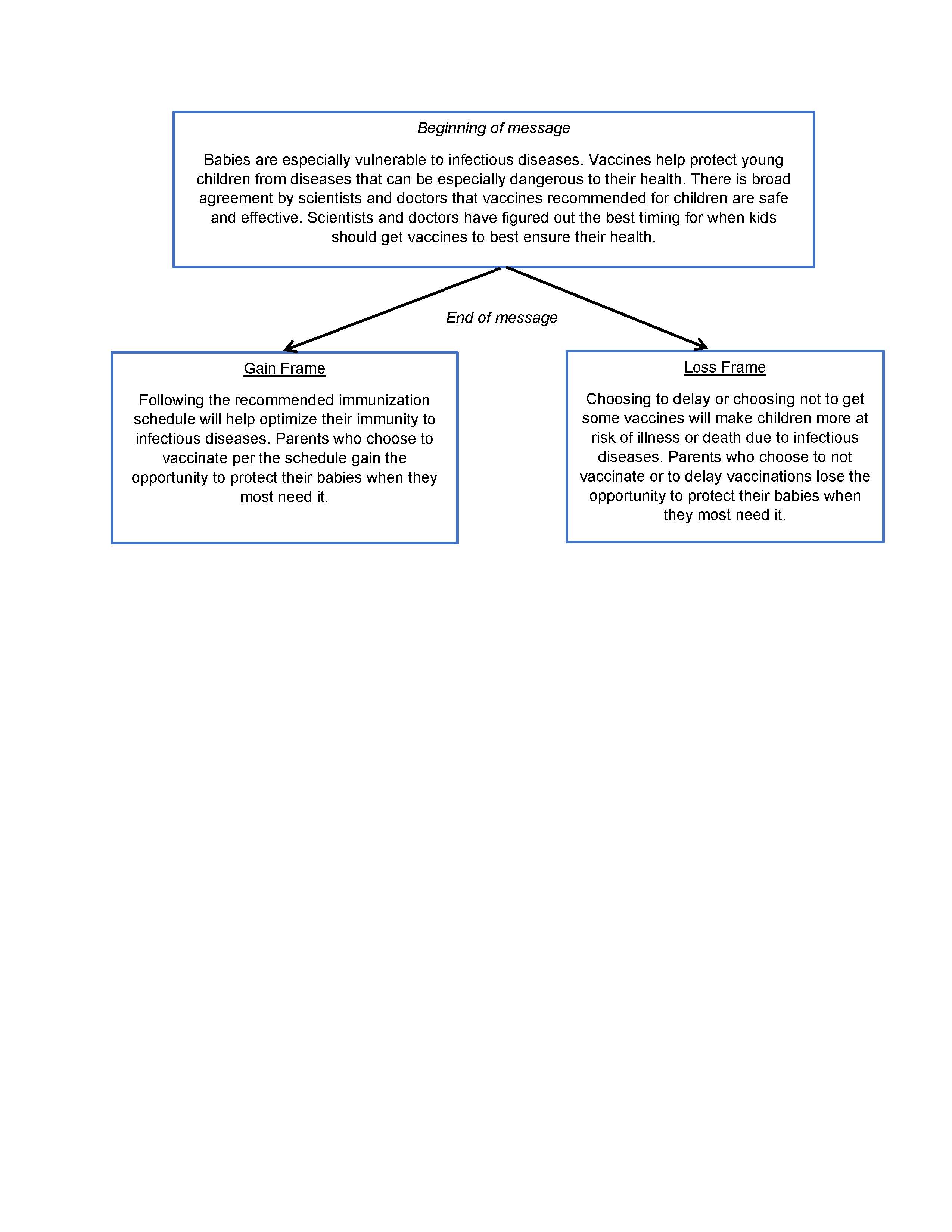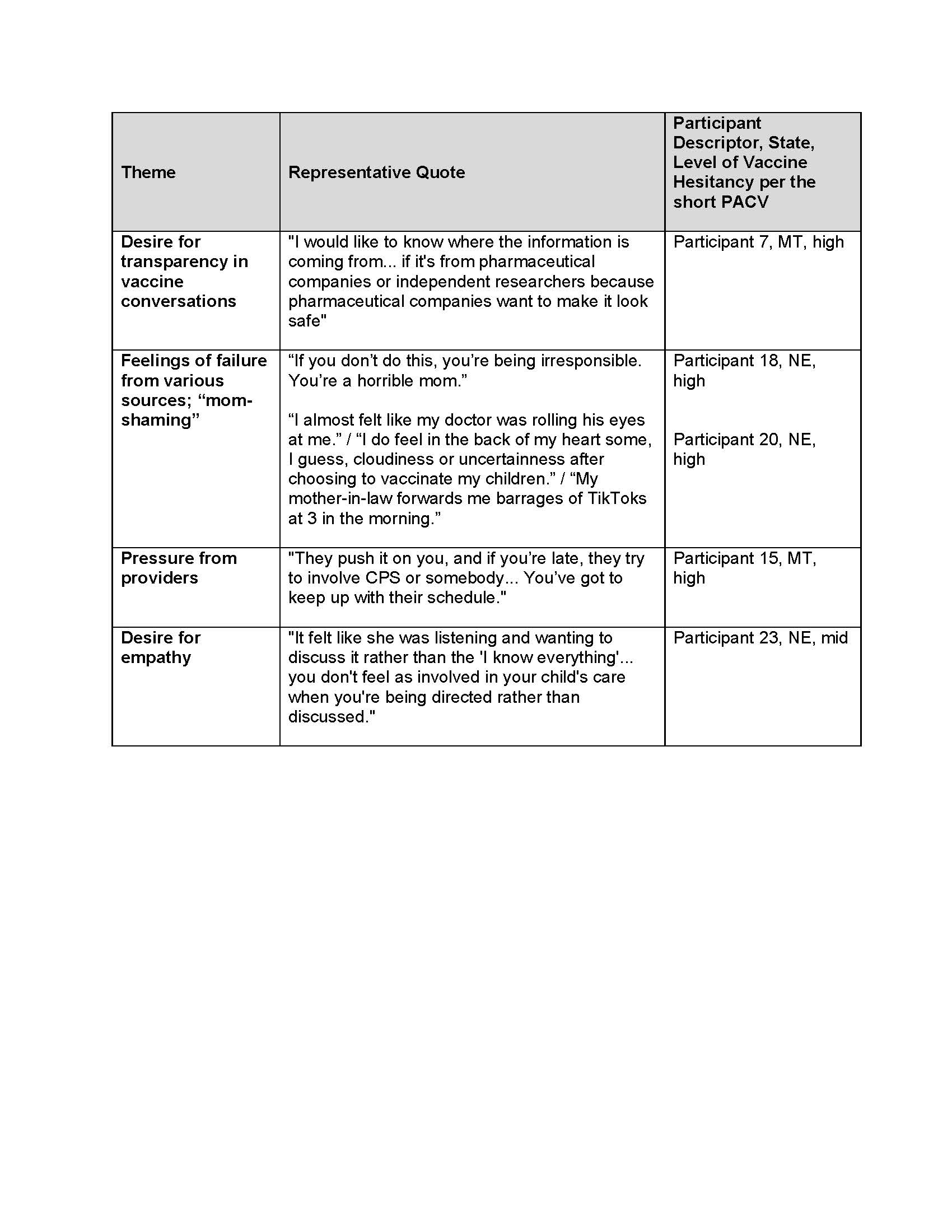Immunizations/Delivery 1
Session: Immunizations/Delivery 1
672 - Prebunking and Debunking Myths to Create Messages Acceptable to Vaccine-Hesitant Parents and Caregivers in an MHealth App
Friday, April 25, 2025
5:30pm - 7:45pm HST
Publication Number: 672.6338
Meg Denny, University of Montana, Missoula, MT, United States; Jeffery C. Peterson, University of Montana, EUREKA, MT, United States; Sheylee C. Stowers, University of Montana, Helena, MT, United States; Ellen K. Kerns, University of Nebraska Medical Center, Omaha, NE, United States; Martina A. Clarke, University of Nebraska at Omaha, Omaha, NE, United States; Elizabeth Reisher, University of Nebraska College of Medicine, Omaha, NE, United States; Sophia R. Newcomer, University of Montana Center for Population Health Research, Missoula, MT, United States

Sophia R. Newcomer, PhD, MPH (she/her/hers)
Associate Professor
University of Montana Center for Population Health Research
Missoula, Montana, United States
Presenting Author(s)
Background: Vaccine hesitancy presents a significant public health challenge, contributing to the resurgence of vaccine-preventable diseases and increased morbidity. Effective, scalable interventions are essential to improve vaccination confidence, especially in rural areas where vaccination rates often lag behind the national average. Our project, part of the Advancing Vaccine Informatics Communication and Education (AdVICE) initiative, seeks to refine the delivery of vaccine information through a mobile health app by addressing misinformation and enhancing trust among vaccine-hesitant caregivers.
Objective: To identify communication strategies to counter common myths regarding vaccine safety and to increase acceptance of vaccine recommendations among vaccine-hesitant caregivers.
Design/Methods: We employed a qualitative focus group design and selected, follow-up in-depth interviews to gather insights from caregivers of young children in Montana and Nebraska. Participants were screened for hesitancy using the short Parent Attitudes about Childhood Vaccine (PACV) scale. Discussions covered general perceptions of vaccine hesitancy, reactions to a social media post containing vaccine misinformation, and evaluations of tailored messages regarding vaccine safety developed using the Health Belief Model with loss and gain framing (Figure 1). Thematic analysis was conducted using NVivo software to identify patterns in participants' responses.
Results: Focus groups included 32 participants, followed by 6 in-depth interviews to further understand emerging themes. Fourteen (44%) participants exhibited high levels of hesitancy per the PACV. Participants effectively identified misleading information about vaccine safety in social media content. When presented with gain versus loss-framed messaging regarding vaccination, participants shared strong aversions to loss-framed messaging, which they described as evoking guilt or "mom-shaming." Themes from the follow-up interviews reinforced these findings, highlighting the importance of empathetic communication that respects caregiver autonomy and addresses their concerns directly (Table 1).
Conclusion(s): Our findings underscore the need for communication strategies that resonate with caregivers' values, presenting information in a supportive and non-judgmental manner. By addressing misinformation about vaccine safety with evidence-based, empathetic messaging, our project aims to contribute to improved vaccine uptake and public health outcomes.
Figure 1: Gain versus loss frame messaging regarding immunization schedule adherence, tested in focus groups

Table 1: Preliminary themes from qualitative analysis of focus group discussions with caregivers of children ages 3 years or younger
 Table 1 caption: PACV=Parent Attitudes about Childhood Vaccines questionnaire; MT=Montana, NE=Nebraska
Table 1 caption: PACV=Parent Attitudes about Childhood Vaccines questionnaire; MT=Montana, NE=Nebraska
